Cellular Industry:
Time to Take Ownership of Part of the Wireless Infrastructure Poblem

The Commission will consider a Notice of Proposed Rulemaking and Notice of Inquiry that commences an examination of the regulatory impediments to wireless network infrastructure investment and deployment, and how the Commission may remove or reduce such impediments consistent with the law and the public interest. (WT Docket 17-79; WT Docket 15-180)
Delays in infrastructure are a major issue in spectrum policy because in reality MOST growth of wireless capacity comes from new infrastructure; the contributions of new technology and new spectrum are minor by comparison - even though both are also needed. But the FCC draft never addresses a basic issue: Why are local government slow in approving new wireless infrastructure?
Let me posit two basic reasons:
- Wireless infrastructure is often needlessly ugly and often designed with little regard for the environment around it.
- Lack of confidence in FCC's RF safety policies and resulting safety fears.

I
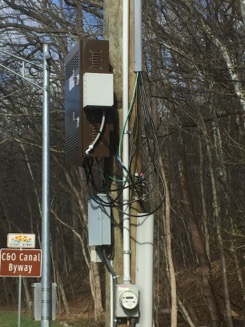
Should the industry have a public strategy on the aesthetics of new 5G infrastructure other than vague talk about "pizza boxes" and pictures of them held by a spokesman, not in actual installations? The proposed Mexican border wall will be generally in remote rural locations but the presolicitation published by DHS clearly states:
"Detailed requirements will be included in the RFP, but for planning we anticipate procuring concrete wall structures, nominally 30 feet tall, that will meet requirements for aesthetics, anti-climbing, and resistance to tampering or damage." (Emphasis added)
While the federal government shouldn't determine aesthetics goals for 5G, shouldn't the industry at least have publicly stated goal for this new ubiquitous addition to our urban design?
Should the public be able to see how well the industry is meeting the goal it sets?
My FCC filing does not oppose any aspect of the draft NPRM the FCC will vote on soon. It does point out that without attention to the two likely root causes of the local government delays this proceeding, like many other before it, will fail to meet its goals.

"All politics is local".
Placing ugly infrastructure on every block in America and preempting local jurisdiction in order to do this could be a good test of whether Tip's famous phrase is still true. Will it result in a major grassroots backlash if implemented as currently structured? Time will tell! Wouldn't it be better (and even more Republican) to defuse part of the problem with non regulatory approaches?
But wouldn't a better approach include voluntary action from the cellular industry with FCC encouragement to pay more attention to the physical design of its infrastructure and its compatibility with its neighbors? While in a few cases there may a need for very expensive custom designs, more attention to design basics like covering or grouping caring and use of paint to minimize the visual impact of equipment will not be major cost factors. However it will need management attention.
As mentioned at the beginning, RF safety concerns are also a factor in local resistance to wireless infrastructure. While I don't think these concerns are valid, the fact that the basic FCC RF safety rules are decades old and that the most recent rulemaking on the topic, Dockets 03-137 and 13-84, have been stalled for years shows apparent FCC apathy on the topic. FCC's partner with shared jurisdiction on RF safety is EPA and the pending severe budget cuts at that agency will make it even more difficult to update RF safety rules to keep them credible. FCC worked closely with the cellular industry to move the Spectrum Frontiers/5G docket at record pace. Both should realize that updated and credible RF safety rules are important to maintaining public confidence in wireless infrastructure - especially as it starts reaching even block in America!
Acceleration of Broadband Deployment by Improving Wireless Facilities Siting Policies
The discussed focused on the urgent need for wireless capacity and the related wireless infrastructure. WE FULLY AGREE!
But there were 2 key points that were not said, perhaps they would be awkward given the influence of the cellular establishment at FCC and in DC in general.

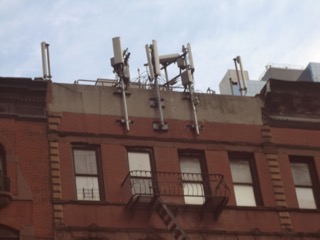
Now the cell industry does sometimes due a good job in designing infrastructure to match its environment. Here are 3 examples of apparently modest cost installations that are reasonable design compromises. Note that in all 3 cases the covers/radomes of the antennas approximately match the surface they are mounted on; in addition there a no loose visually contrasting cables in these last 3 photos:
(In NYC only 2 blocks from the previous photo)
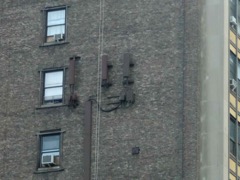
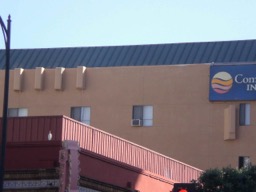
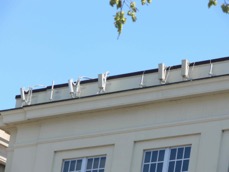

“All politics is local”
There is a limit how much the cellular industry can impose on local jurisdictions at the current ugliness levels without a grassroots political backlash. But well designed infrastructure need not be either ugly or very expensive. More consistent attention to physical design is urgently needed!
UPDATE
PCIA Press Release: PCIA Applauds FCC’s Order on Wireless Infrastructure – Streamlined Rules Will Speed Broadband Deployment



![Validate my RSS feed [Valid RSS]](valid-rss-rogers.png)

